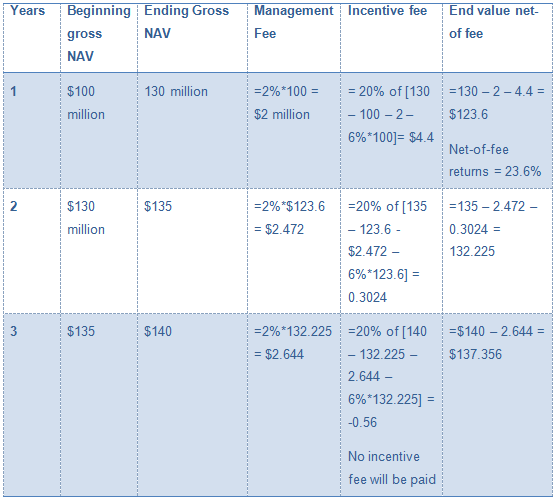Hedge Fund Fee Structure, High Water Mark and Hurdle Rate
In a hedge fund, the investors pay two types of fee to the hedge fund managers, namely management fee and incentive fee (also called performance fees). They typically charge a management fee of 1-2% of fund’s net asset value. This is paid irrespective of how the fund performs. The hedge fund managers also charge an incentive fee of 20% of profits. The fee charged is mentioned as “2 and 20” which means 2% management fee and 20% of funds profits. The fee structure for hedge funds is significantly high compared to mutual funds. The calculation of profits for the purpose of calculating incentive fees can follow different structures:
- The profit can simply be the total increase in NAV
- The profit can be the increase in NAV after adjusting for management fees
- There could also be a benchmark or a hurdle rate. The incentive will be paid only if the fund's annual rate of return exceeds the hurdle rate.
- They may also have a feature called high water mark.
High Water Mark High water mark is the concept that the hedge fund managers will receive the incentive fees only if the fund exceeds the highest NAV it has previously achieved. This is to ensure that the incentives are not paid on the profits that were just used to offset the losses of previous years. Let’s take an example to understand the calculation of management fee and incentive fees. Let’s say the hurdle rate is 6% and the incentive fee is calculated on gains net of management fees. The fund began with $100 in assets. 
| Year | High-Water Mark | New NAV | Performance Fee |
| 1 | $100 | $140 | =20% of $40=$8 |
| 2 | $140 | $120 | No performance fees as the NAV is below the high-water mark |
| 3 | $140 | $160 | =20% of $20=$4 |


